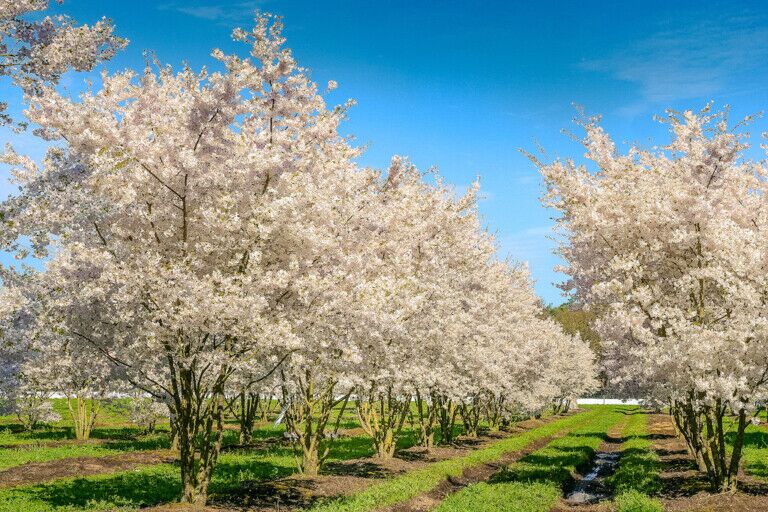By Johan van den Berk, Van Den Berk Nurseries
In theme parks, trees play an unmistakable role. Beyond providing shade to visitors and contributing to the atmosphere, trees form a crucial part of the narrative a theme park seeks to convey. This article explores the role of trees and other greenery in enhancing the narrative and experience within a park.
The importance of trees in thematic landscapes
Trees are vital in thematic landscapes, such as theme parks with a specific story. They contribute in various ways to convey the intended theme. Firstly, trees create the right ambience aligning with the theme and also help in guiding visitors. Thoughtful tree placement can create sight lines and viewpoints to attract attention. Moreover, trees can demarcate different areas within the park.
Applications of trees in theme parks
Consider Efteling as an example, a park where natural elements seamlessly blend with fairy-tale themes. Mature trees are strategically placed, complementing the mystical atmosphere. They embrace the fairy-tale structures and scenes, enhancing the feeling of walking through an enchanted forest.
Similarly, in attractions, trees are often used to enhance the experience. A notable instance is Disneyland Park’s Big Thunder Mountain. This roller coaster weaves through a dilapidated 19th-century mining town, with large pine trees lending credibility to the setting.
These examples demonstrate how theme parks creatively utilize trees. They contribute to the ambience, support the park’s narrative, and immerse visitors in an enchanting fantasy world. The right trees in the right places are essential for the magic of theme parks.
Sensory experience of specific themes
Trees with abundant blooms, such as various species of the Prunus family, can be an integral element in a theme, like a Japanese-inspired theme. The sight of blossoms floating through the air, albeit brief, offers a unique effect. Other blossoms also emit a sweet fragrance, contributing to the park’s ambience. Furthermore, they attract bees and butterflies, enriching the park’s natural environment and promoting biodiversity.
In temperate climate zones, efforts are often made to create an environment resembling a tropical rainforest, fitting various park themes. Trees with large, compound leaves or those that flower profusely are ideal for this. They are often combined with evergreen species, enhancing the sensory experience and contributing uniquely to the rainforest theme’s atmosphere and experience.
Trees reduce noise from attractions and crowds
Large trees and dense foliage effectively dampen ambient noise by absorbing and scattering sound waves. This creates tranquil zones where visitors can escape the hustle and bustle. Additionally, large trees provide shady areas and cool environments on warm days.
Design considerations for trees in theme parks
Selecting and placing trees in theme parks requires careful consideration. Initially, the selection of suitable tree species is critical. Factors like local climate and soil conditions must be considered for optimal growth. Maintenance aspects such as pruning needs and disease susceptibility should also be taken into account.
The precise location for planting a tree is also crucial. Designers must consider the space needed for the tree to mature, estimating both the height and the width of the crown to ensure sufficient growth space. Root pressure should also be factored in to prevent damage to paths and buildings.
Moreover, the tree must fit within the park’s design and theme. The shape, leaf type, flowers, and bark can all contribute to the desired atmosphere. For instance, twisted, gnarled trees suit a fairy-tale setting, while tall pines align well with a mining town theme.
Tailored advice for appropriate species selection
For creating the perfect experience in theme parks combined with trees and greenery, the expertise of a specialized tree nursery is indispensable. As one of the largest tree nurseries in Europe, we have provided many parks with beautiful (large) trees. Our specialists offer advice on optimal tree selection for specific park themes and locations.
In summary, the successful integration of trees into theme park design requires a thorough consideration of growth location, maintenance, space, theme, and visitor experience.
